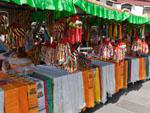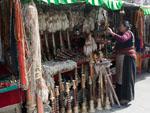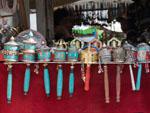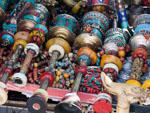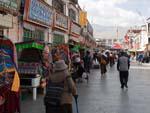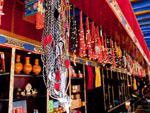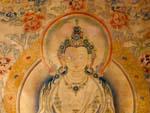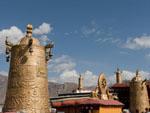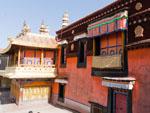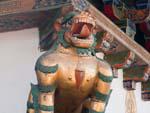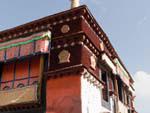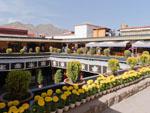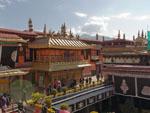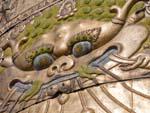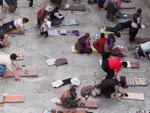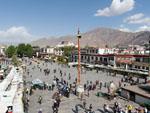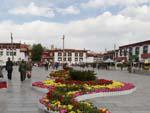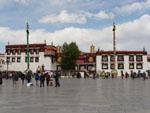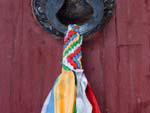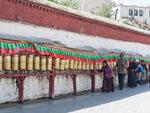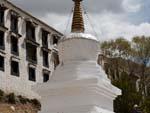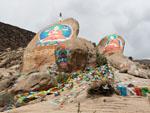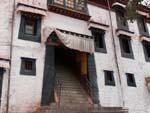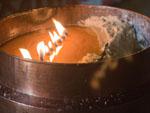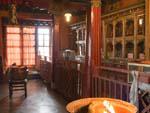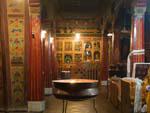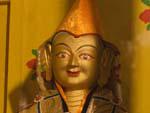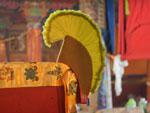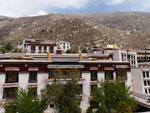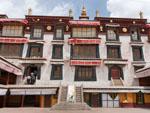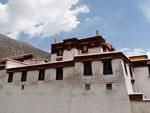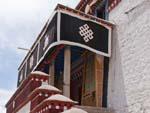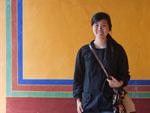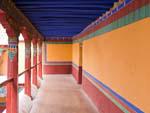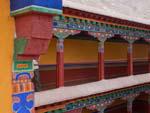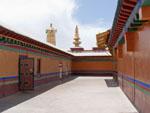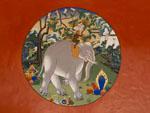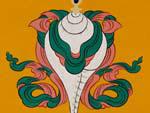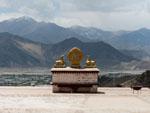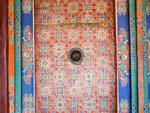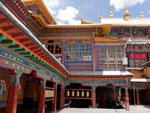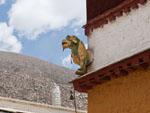Jokhang Temple and Barkhor square
Our first day in Lhasa started with a visit to the Jokhang Temple, walking through the bustling Barkhor Bazaar to the Barkhor square.
By the time we arrived, there were already many pilgrims outside the temple, performing prostrations whilst two large incense burners omitted strong smoke of juniper.
As we lined up amongst the tens of Tibetan pilgrims, we couldn’t help but notice the strong smell of yak butter which we later found is used to burn offering candles. The Jokhang Temple is quite a large complex. We entered courtyard first and our guide Demdah advised that this was the place where important examinations (e.g. to determine the highest lama) sat by Gelugpa Iamas are held.
After the courtyard, we entered the inner prayer hall which is surrounded by a number of chapels. The prayer hall contained six statues – two of Guru Rinpoche, three Jampa statues (Maitreya, the Future Buddha) and the thousand-armed Avalokiteshvara. We would learn later that these statues would be seen repeatedly across many of the monasteries in Tibet.
As per Buddhist tradition, we encircled the surrounding chapels clockwise. Inside the chapels, we were also required to encircle the room clockwise. There were numerous chapels, including the Chapel of Tsongkhapa (the founder of the Gelugpa order, probably the most renown of the four orders), Chapel of Chenresig, Chapel of Jowo Sakyamuni (said to be the most important shrine in Tibet, as it houses the Present Buddha image at age twelve and is thought to have been brought to Tibet by Princess Wencheng, the Chinese wife of King Songstan Gampo – the founder of Tibet). After visiting a number of chapels, we headed to the roof of Jokang to view the surrounding areas, including views of Barkhor Square and Potala Palace.
thydzikgooglemap(http://sonyaandtravis.com/maps/lhasa-tibet-jokhang-temple.xml,s)
Drepung Monastery
After Jokang, we headed to Drepung Monastery, located about 8km from Lhasa, stopping by Potala Palace to pick up tickets for the next day (there is a 2000 limit on ticket numbers per day for the popular attraction). Drepung was founded by one of Tsongkhapa’s disciples in the 15th century and is part of the Gelugpa order. It has a number of key buildings, we visited Ganden Palace, the main assembly hall (with a large Jampa statue), the kitchen (used to cook the lamas meals) and a meditation hut where we were told some monks meditate for years on end. It was our first monastery and I enjoyed walking around and admiring the beautiful deep red and white buildings with their wispy white curtains. We had a lunch of rice and vegetables at the Monastery restaurant next door before heading to our next destination.
thydzikgooglemap(http://sonyaandtravis.com/maps/lhasa-tibet-drepung-monastery.xml,s)




































































































